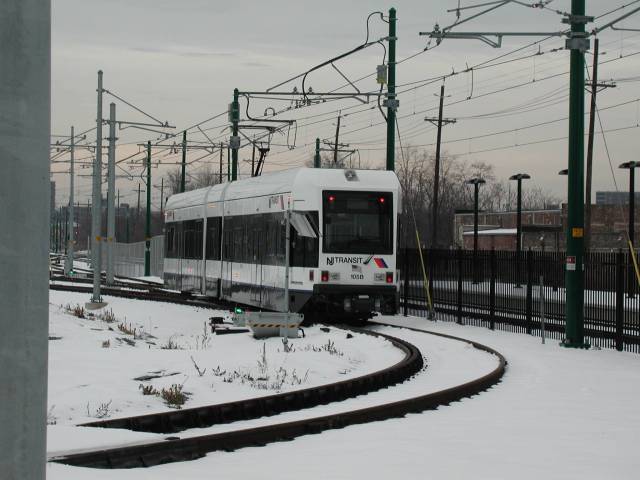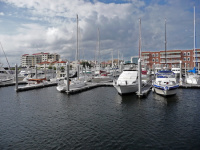
Upon crossing the Passaic River, it entered the Ironbound Section of Newark at Ferry and St. The bridges across the rivers were raised in 1913 to accommodate shipping. It then crossed the Hackensack to Kearny Point, the tip of a larger peninsula formally known as New Barbadoes Neck, to the Passaic River. The route travelled west from the Hudson and crossed Bergen Hill where a cut had been excavated for a right of way (ROW). The line was built partially to relieve overcrowding and reduce the travel time taken on the New Jersey Railroad line to Exchange Place on the Hudson River waterfront. In 1872 a connection south was added at a junction called Newark Transfer to Elizabeth, where it joined the railroad's main line, which crossed Newark Bay at Bayonne on the predecessor of the CRRNJ Newark Bay Bridge. The line cost $300,000 per mile, unprecedented at the time, earning it the sobriquet "the country's costliest railroad". Opened on Jand operated by the Central Railroad of New Jersey (CNJ), the railroad provided a direct route between Newark and its Jersey City terminal, where passengers could transfer to ferries to New York. Though operations ended in 1946 portions remained in use until 1967. The Central Railroad of New Jersey operated it from its opening in 1869.


The Newark and New York Railroad was a passenger rail line that ran between Downtown Newark and the Communipaw Terminal at the mouth of the North River (Hudson River) in Jersey City, bridging the Hackensack River and Passaic River just north of their mouths at the Newark Bay in northeastern New Jersey. The bridge over the Northeast Corridor near Newark Penn Station, slated to become part of Triangle Park


 0 kommentar(er)
0 kommentar(er)
